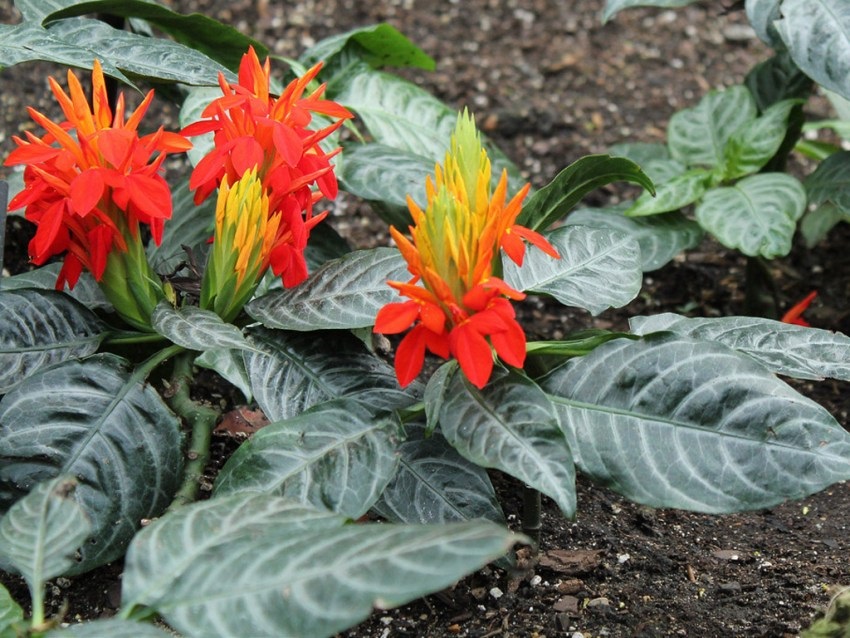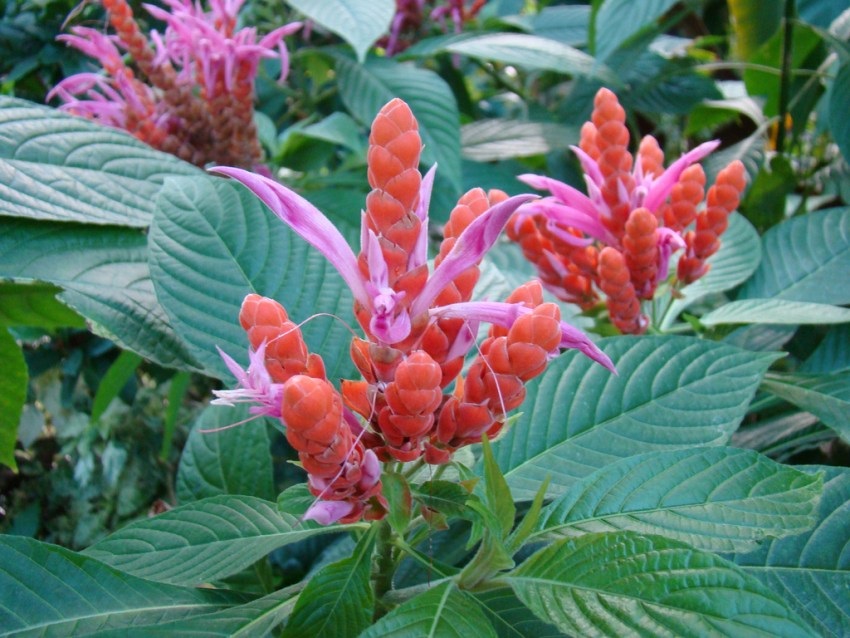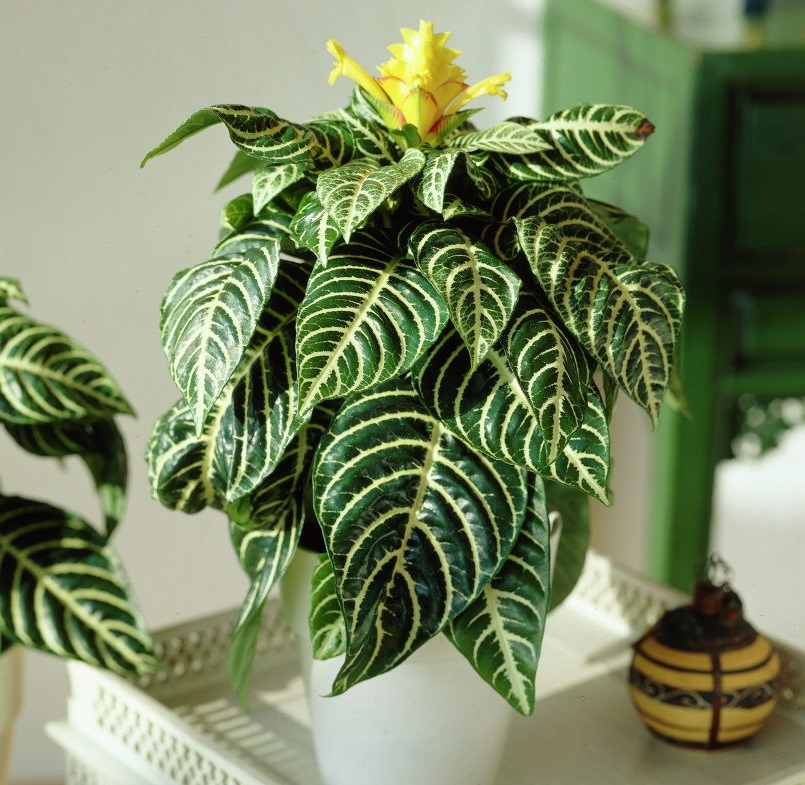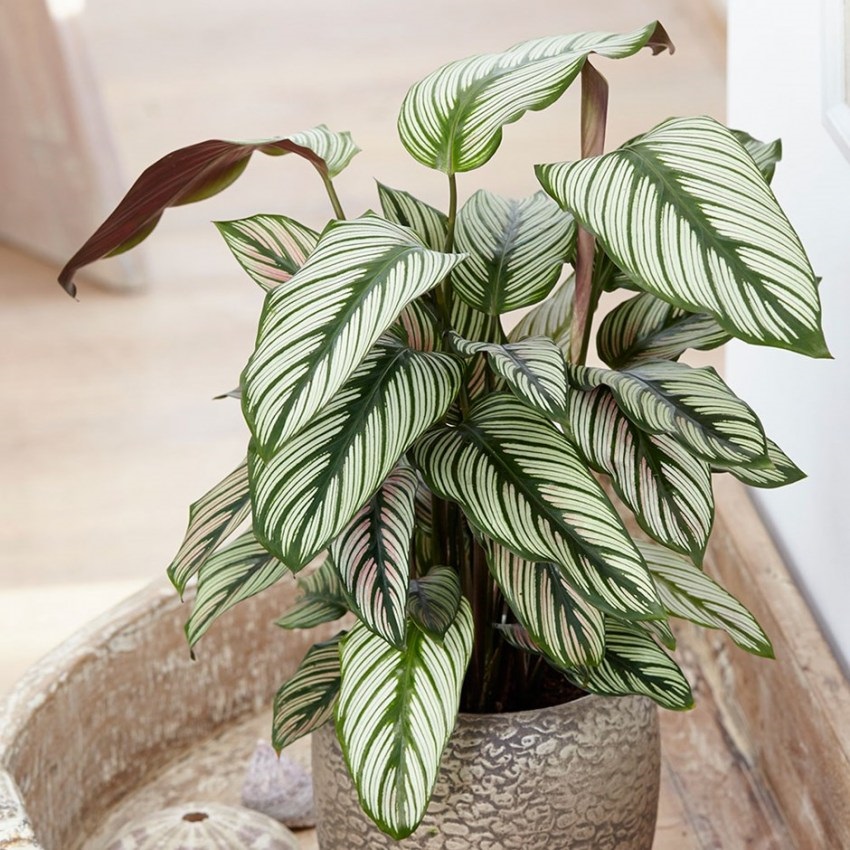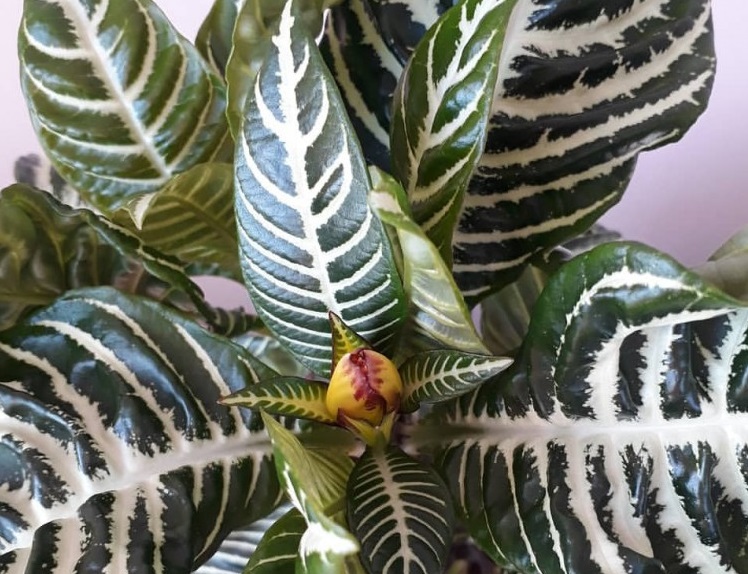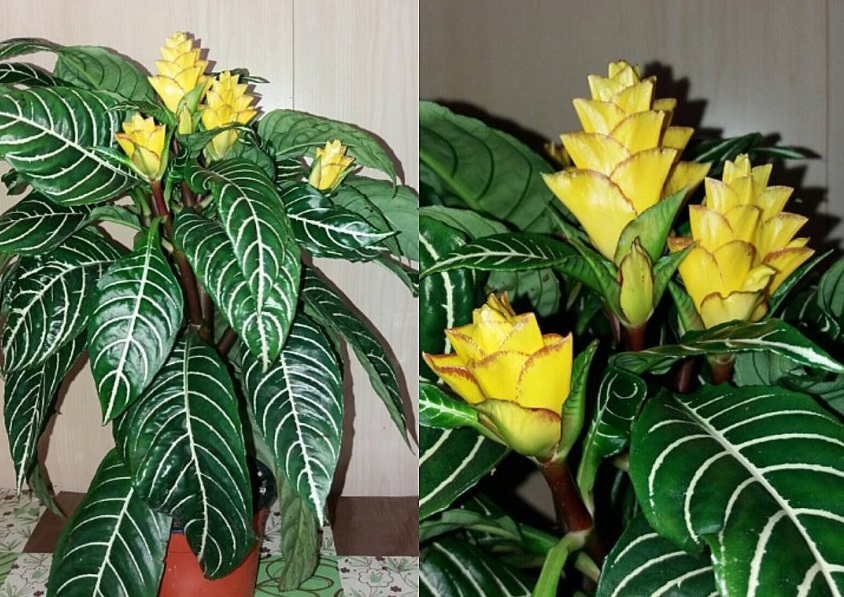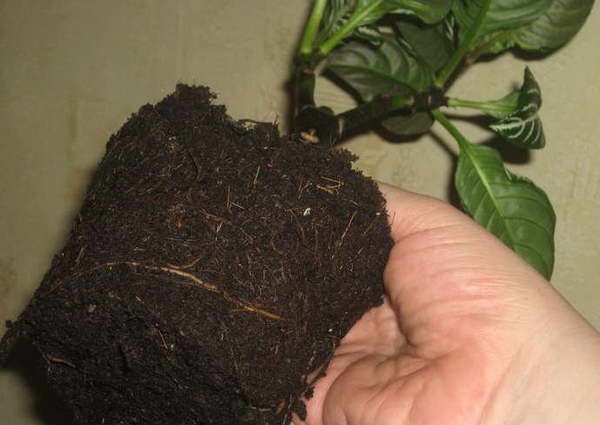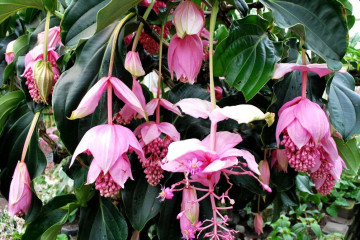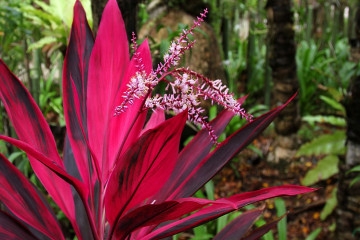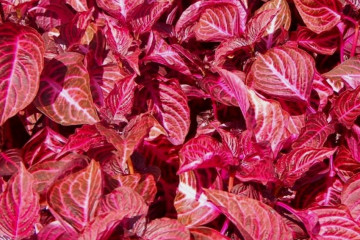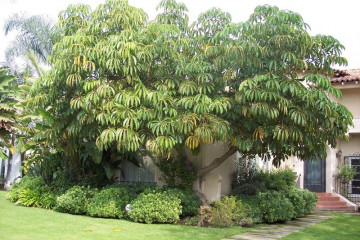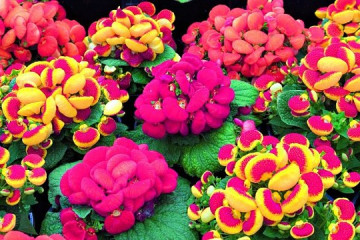Afelandra flower - home care
Content:
The flora is rich in unusual and very bright specimens. Some are distinguished by beautiful flowers, others - foliage with a special shape or color. There are plants among the representatives of the flora that retain their picturesque qualities all year round. These include Afelandra. It is not for nothing that indoor plant lovers want to breed this decorative miracle.
Homeland of the plant
Protruding Afelandra is an evergreen shrub from the Acanthus family. There are about 170 species of them. Often found in the American tropics and less commonly in the subtropics. Under natural conditions, it reaches two meters in height, at home - no more than 1.3 meters. This thermophilic plant has received a lot of moisture in the wild, so it will not be easy to grow it at home.
Meaning of the name
The Greek name Aphelandra, formed from two roots "aphtlis" and "anduos", means "simple man". The plant got this name because of the structure of the male organ of the flower. Its anther is unilocular, that is, simple. This is where the name comes from.
Description of Afelandra
The plant retains a very elegant look all year round. Its leaves are large, elongated, with a glossy surface, painted in dark - and light green colors with white patterns repeating the veins.
The flowers are small in size, the bract is distinguished by a unique pyramidal shape (up to 10-15 cm) and a bright yellow, red or orange color.
History of appearance in Europe
After travelers brought the decorative Afelandra flower to Europe, it acquired the status of a houseplant. They began to breed it in greenhouses because of the harsh winters. In conditions close to the tropics, varieties of Afelandra Roeslia, tetrahedral, Sinclair, the most beautiful and many others are grown. Several varieties of bulging aphelandra (aphelandra squarossa) are cultivated: Louisae, Dania, Leopoldii.
Use as a houseplant
Best of all, two species have mastered the new conditions: protruding aphelandra and orange aphelandra.
Afelandra orange is rarely found on sale. It is more suitable for the home, due to its small growth and long flowering, which, under good conditions, lasts a week and a half: from June to November.
Features of caring for Afelandra at home
Aphelandra is a very capricious and demanding plant, does not like drafts and dry soil. Any violation of the requirements of this beauty leads to growth retardation or illness. What are these needs? To avoid problems during the cultivation process, you need to know how to care for the aphelandra at home.
Temperature regime
To create comfortable conditions for the plant of afelandra squarrosa, the required temperature must be maintained in the room at different times of the year. In summer, it should not be higher than 25 degrees, in spring and autumn - about 20. In winter, the thermometer should not drop below 16 degrees.When airing the room, you should temporarily remove the flower to a place that is not blown through by a draft.
Lighting
Although aphelandra leaves and flowers love warmth and light, they must be protected from direct sunlight. To do this, the pot with the plant should be removed to the windows facing east or west. The most suitable option is diffused lighting. In winter, during the dormant period, the flower pot can be removed from the window to a bright place.
Watering
To ensure the normal life of the flower, it must be watered according to a specific schedule. If we divide watering by stages of development, then it will happen like this:
- Stage 1: growth - 2 times a week;
- Stage 2: flowering - once every 2 weeks;
- Stage 3: recovery after flowering - once a month;
- Stage 4: the beginning of growth - 2 times a week.
In summer, the soil requires abundant watering, in the autumn-winter period it is necessary to water it as needed, but do not allow the earthen coma to dry out.
Spraying
It is necessary to periodically spray the leaves and flowers - this will create a certain microclimate of the place of its breeding. Such water procedures on summer days are necessary for the plant (2 times a day) if the heat lasts for a long time.
Humidity
On winter days, caring for an afelandra flower at home is complicated by the fact that it is necessary not only to maintain the desired temperature, but also not to dry out the earthen lump in the pot. To prevent the leaves from drying out, the flower should not be kept on the windowsill when the battery is hot. If the air is very dry, you can use an artificial humidifier.
Priming
Indoor plant aphelandra bulging requires light, breathable soil for good growth and lush flowering. The composition is considered the best: peat or humus (2 parts), coarse sand (1 part). Sometimes other soil constituents are used: leaf or clay-sod soil, charcoal or bone meal is added. But there must be sand.
Top dressing
Fertilization is a necessary moment in the care of Afelandra. It is necessary to feed it with fertilizers containing phosphorus, nitrogen and potassium from March to November at a frequency of 2 times a month. During the dormant period, nitrogen fertilization can be applied to maintain the good shape of the foliage. During growth, fertilizers are useful for decorative deciduous plants, during active flowering - for decorative flowering plants.
When and how it blooms
To know well how to take care of Afelandra at home, it is necessary to study all phases of its growth.
Types and forms of flowers
The flower shapes of the aphelandra depend on the variety. Most often, the flowers of the plant are small and inconspicuous, but the peduncles are simply luxurious. They grow in the form of a spike or pyramid of bright yellow, orange or red color.
Flowering period
The most important time a plant is grown for is the flowering time. The first aphelandra flowers begin to bloom in June and delight everyone for 6 weeks. The amount of color depends on the age of the plant.
How Afelandra reproduces
At home, flower reproduction is possible by seeds and cuttings.
Germinating seeds
Sow well-ripened seeds in a container with a mixture of leafy soil and sand. The earth must be well moistened with warm water with a weak solution of manganese. Germination is carried out in a greenhouse or in a house at a temperature of +25 degrees. The soil must be regularly ventilated. When the sprouts are older, transplant them into flower pots.
Rooting cuttings
Reproduction by cuttings is the most affordable. In the spring, choose an annual shoot on the plant. Cut it off so that there are 2-3 leaves on it, and treat it with a root formation stimulant. Plant in a pot with peat-sandy soil or in a greenhouse. Cover with glass or cellophane to create a greenhouse effect. Ventilate daily for 10 minutes. Rooting occurs at 22 degrees of heat for 1.5-2 months. Then plant the cuttings that gave the roots in flower containers.
Plant transplant
It is recommended to transplant Afelandru. Young plants in spring, and grown bushes - once every 2-3 years. If you need to transplant a newly purchased specimen or plant germinated seeds, you need to perform several actions common to all cases:
- Buy or prepare your own substrate consisting of turf, peat and river sand in a ratio of 2: 1: 1.
- Be sure to disinfect it.
- Pour a drainage from expanded clay or small stones onto the bottom of the pot on ¼ part of the pot.
- Pour 4 cm thick soil on top for planting adult plants.
- Prepared bushes with peeled stems and washed roots are placed vertically in the ground, its remains are poured in and compacted well.
- For planting seedlings or acquired young plants, the soil in pots is prepared according to the same scheme, only it is laid out all at once.
- After that, plants are planted in it and watered well.
Possible problems in growing Afelandra
Quite often, after transplants, a number of problems arise. Globally, the reasons for their appearance can be divided into 2 groups: disruptions in care or the presence of diseases or pests. To determine the action, it is necessary to identify the cause.
Leaves fall or wither with low watering, cold draft, too bright sun or lack of mineral nutrition.
Leaves shrink in a cramped pot or with a lack of fertilizers.
The brown edge of the foliage indicates a lack of moisture, brown spots - a lack of fresh air or sunburn.
With lesions of the thyroid gland, mealybug or brown rot, the plant can not only lose its leaves, but also die if special measures are not taken urgently. Aphids also do great harm to Afelandra, attacking her with whole colonies.
Every day grows the attention of gardeners to the cultivation of southern ornamental plants in their plots. Spring and summer in most regions are short and not warm enough. Inhabitants of the tropics need a lot of sun, warmth and abundant moisture. Lovers of indoor plants want to have a small corner of a tropical paradise in their apartment. Afelandra is best suited for the role of the queen of this paradise.
Video
